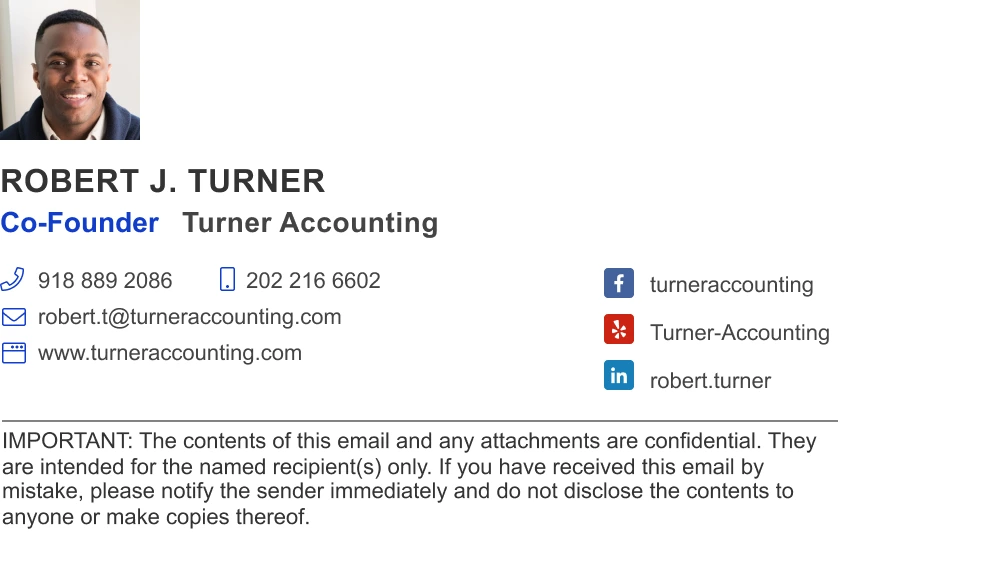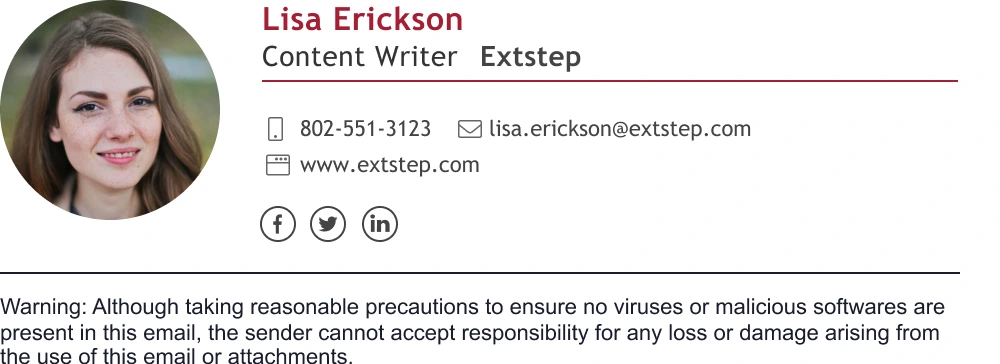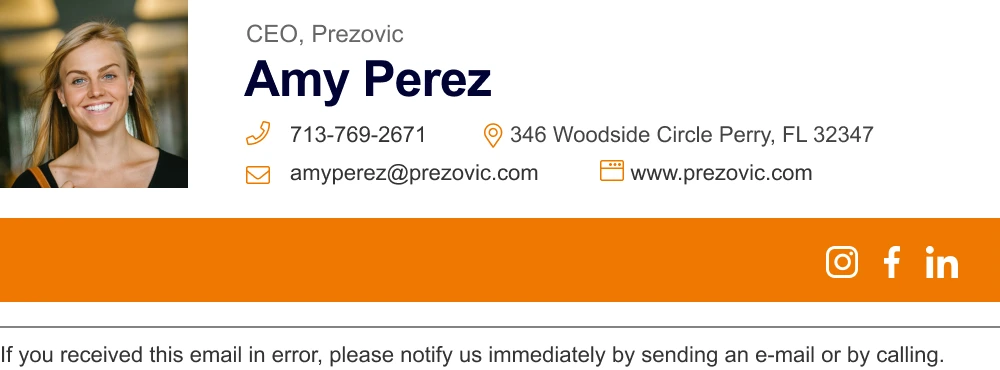
Find the best legal email disclaimer template for you – GDPR, confidentiality & more. See how you can easily add it automatically to all your emails.

An email disclaimer is a text section containing a legal notice or a warning that is added at the end of your email (sometimes as part of your email signature). Some common disclaimer types include GDPR, Confidentiality, Compliance, Virus transmission, Non-binding, Opinion, and Correct recipient.
What’s on this page
Your disclaimer should only contain the specific notification you want your audience to get wind of. No more and no less. If there is a concrete legal issue that your disclaimer is meant to solve be sure to get the counsel of a lawyer well-versed in your local rule book and for your specific need.
Let’s jump straight into some examples and learn how to write legal disclaimers for email signatures. We’ll be using what we have on offer in Wisestamp’s email signature disclaimer add-on. Use the add-on to create a professional email signature that incorporates these disclaimer examples.
If you need something special you can also add a custom disclaimer using the add-on. Simply paste it into your Wisestamp signature after you talked to your legal adviser and customized a disclaimer for your specific needs and country requirements.
Made to prevent a breach of confidentiality where the information is intended for the recipient only. If that information is leaked, the recipient could be considered accountable.
Imagine you accidentally send an email including billing information to the wrong client. This can land you in legal trouble, however, by adding a confidentiality disclaimer to your email, you’ve added an extra layer of protection to your business.
It might be in your best interest to consult with a lawyer to discuss the exact legal verbiage and information you should include that makes sense for your business.
“The information transmitted by this email is intended only for the person or entity to which it is addressed. This email may contain proprietary, business-confidential, and/or privileged material. If you are not the intended recipient of this message, be aware that any use, review, retransmission, distribution, reproduction or any action taken in reliance upon this message is strictly prohibited. If you received this in error, please contact the sender and delete the material from all computers”
“IMPORTANT: The contents of this email and any attachments are confidential. They are intended for the named recipient(s) only. If you have received this email by mistake, please notify the sender immediately and do not disclose the contents to anyone or make copies thereof”

Confidentiality disclaimer example | Made with WiseStamp
Virus transmission is another issue. It is very easy to mistakenly send a virus in an email and this could actually get your company sued. You can have a disclaimer that says the email could possibly contain a virus and that the recipient is responsible for scanning for viruses.
If you usually send out a lot of links or attachments in your email, this is an important email footer to include. You don’t want to hold your company liable for any unknown viruses or malware that might be lurking in any of your emails.
Consider adding a brief email footer that warns the recipient of the (small) but potential threat of viruses being transmitted via email.
“This email may contain viruses that could infect your computer. We strongly recommend using a malware scanner to check the contents of this email and its attachments, if there are any. Since emails can be lost, intercepted, or corrupted, [name of your company] accepts no liability for damages caused by viruses transmitted via this email.”
“Warning: Although taking reasonable precautions to ensure no viruses or malicious software are present in this email, the sender cannot accept responsibility for any loss or damage arising from the use of this email or attachments?

No virus disclaimer example | Made with WiseStamp
Companies are liable for the content of the emails sent by their employees. However, companies are unable to monitor every single email that comes through. Sending a non-binding disclaimer regarding this can keep your company from being held liable for the content of some emails.
We use this disclaimer template for our signatures:
“No employee or agent is authorized to conclude any binding agreement on behalf of the company with another party by email without specific confirmation”

Non-binding disclaimer email signature example | Made with WiseStamp
Like the non-binding disclaimer, a personal opinion disclaimer puts a divide between the personal opinion of an employee or any other person affiliated with the company and the formal views of the company as a legal entity.
We use this disclaimer template for our signatures:
“All views and opinions expressed in this email message are the personal opinions of the author and do not represent those of the company. No liability can be held for any damages, however, caused, to any recipients of this message”

Personal opinion disclaimer example | Made with WiseStamp
This kind of disclaimer is meant to protect the sender from the common mistake of sending an email to the wrong person. Some emails may contain delicate personal information and may be cause for a lawsuit if sent to the wrong recipient.
We use this disclaimer template for our signatures:
“If you received this email in error, please notify us immediately by sending an e-mail or by calling”

Correct recipient email disclaimer example | Made with WiseStamp
This became an important one in the last few years. It’s relevant to all types of businesses. Just in case you weren’t aware, the General Data Protection Regulation is a regulation established to protect user data and privacy in the European Union and in the European Economic Area. Even if your business is based outside of the EU, you can still be affected by GDPR regulations if your emails land in the inboxes of EU clients.
Since the GDPR laws passed, adding a disclaimer to your email is definitely a necessity. These disclaimers have three functions: they protect your business, they create an extra layer of trust between you and your client, and they help you conform to industry standards.
The GDPR disclaimer should be used in the event that you collect any type of customer data that can be interpreted as personal or confidential and that can potentially identify an individual person. Therefore, if your clients ever fill out a web form with details such as their name, address, or email address, this data is considered personal and needs to be protected.
In order to inform your clients that your business is GDPR compliant, the most common way to do so is by adding a disclaimer to each email. You should also be adding the details to your company’s Privacy Policy.
The GDPR email footer might look something like this:
“[Company Name] is compliant with the General Data Protection Regulation (GDPR) (EU) 2016/679. We are committed to guaranteeing the security and protection of the private information that we process. To understand more about how we collect, store, and process your personal information in compliance with GDPR, please take a look at our privacy policy”